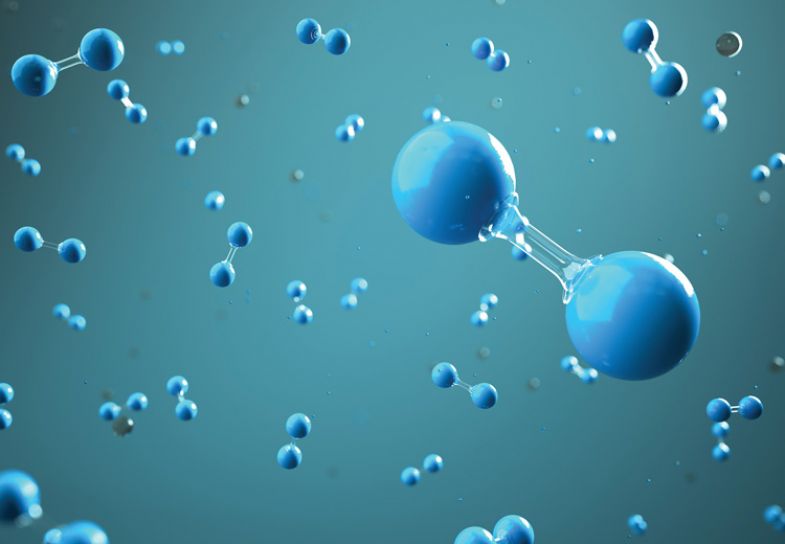
Scientists at Samara State Technical University are developing technology for the safe accumulation and release of hydrogen using liquid organic hydrogen carriers
Easily available clean energy, obtained from renewable sources and efficiently converted, is in high demand. Scientists at Samara State Technical University (Samara Polytech) are working on advanced technologies for converting renewable sources into value-added fuels and platform chemicals, as well as investigating sustainable hydrogen storage. The project, led by Professor Sergey P. Verevkin, was launched in 2016 as part of the Russian government’s mega-grant programme.
Finding efficient hydrogen storage materials is one of the greatest challenges of converting to a hydrogen economy. In conventional liquid organic hydrogen carriers (LOHCs), the hydrogen is stored in unsaturated or aromatic molecules via a catalytic hydrogenation reaction.
“We practically domesticate hydrogen,” says Professor Verevkin. The LOHC material can be transported to any location where hydrogen is needed. There, the hydrogen is released via the catalytic dehydrogenation reaction and the LOHC is ready to be hydrogenated again. Due to their ease of integration into existing chemical transport infrastructures, LOHCs are considered attractive hydrogen storage options compared with liquid or compressed hydrogen.
At Samara Polytech, fundamental kinetic and thermodynamic aspects are being examined. Thermodynamics is responsible for selecting key aromatic compounds that can be considered the seminal LOHC. Once the LOHC has been selected, the search for effective catalysts begins.
The technology developed in Samara Polytech’s laboratory offers significant advantages over existing storage and transport methods. It is more cost-effective and less hazardous, and has a high storage capacity. Additionally, the applications of LOHCs are very flexible. They can be used as a mobile power source – for vehicles, for example – or a stationary one, bringing an uninterrupted power supply to homes, hospitals and schools, especially during times of peak demand, by reducing energy losses in periods of low consumption. Notably, the existing infrastructure of gas stations can be used to generate hydrogen power without significant changes.
Samara Polytech’s scientists are not only focused on hydrogen power. “Other research areas of our laboratory are related to renewable resources,” says Professor Verevkin. “In particular, we develop processes for the production of fuels and valuable chemicals from natural renewable sources. We are working on versatile technologies to convert biomass into fuels, which are now made from oil. For example, wood can be broken down into lignin and cellulose, and then technological methods can be used to extract small compact molecules from this raw material to be used as fuel or additive to gasoline.”
With the global interest in renewable resources growing, Samara Polytech’s results are of great interest not only in Russia but around the world. The university’s work is often cited in highly regarded international journals. In 2020, Professor Verevkin and his team were invited to contribute to a special issue of Industrial & Engineering Chemistry Research journal, which celebrated authors in the top 1 per cent of the most cited articles from 2015 to 2019.
Find out more about Samara State Technical University.













